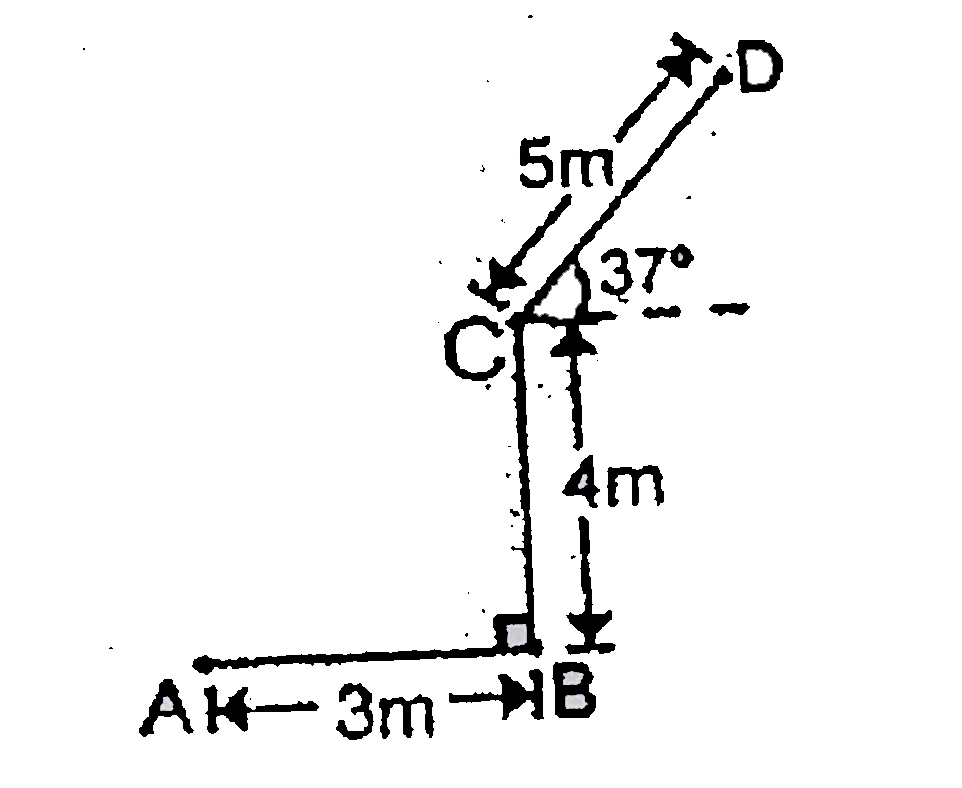A particle moves along a circular path of radius R. The distance and displacement of a particle after one completer revolution is
0,2πr
2πr,0
0,πr
πr,0
The correct Answer is:B
To solve the problem of finding the distance and displacement of a particle after one complete revolution along a circular path of radius R, we can follow these steps:
Step 1: Understand the Circular Motion
A particle moving in a circular path will return to its starting point after one complete revolution.
Step 2: Calculate the Distance
The distance traveled by the particle in one complete revolution is equal to the circumference of the circle. The formula for the circumference C of a circle is given by:
C=2πR
where R is the radius of the circle.
Step 3: Calculate the Displacement
Displacement is defined as the shortest distance between the initial and final positions of the particle. Since the particle returns to its starting point after one complete revolution, the initial and final positions are the same.
Thus, the displacement D is:
D=0
Final Results
- Distance traveled after one complete revolution: 2πR
- Displacement after one complete revolution: 0
A particle moving in a circular path will return to its starting point after one complete revolution.
The distance traveled by the particle in one complete revolution is equal to the circumference of the circle. The formula for the circumference C of a circle is given by:
Displacement is defined as the shortest distance between the initial and final positions of the particle. Since the particle returns to its starting point after one complete revolution, the initial and final positions are the same.
- Distance traveled after one complete revolution: 2πR
- Displacement after one complete revolution: 0
Topper's Solved these Questions
- BOOK - DC PANDEY ENGLISHCHAPTER - MOTION IN A PLANEEXERCISE - Check point 3.210videos
MOTION IN A PLANE
- BOOK - DC PANDEY ENGLISHCHAPTER - MOTION IN A PLANEEXERCISE - Check point 3.310videos
MOTION IN A PLANE
- BOOK - DC PANDEY ENGLISHCHAPTER - MOTION IN A PLANEEXERCISE - (C )Medical entrances gallery32videos
MOTION IN A PLANE
- BOOK - DC PANDEY ENGLISHCHAPTER - MOTIONEXERCISE - Medical entrances gallery19videos
MOTION
- BOOK - DC PANDEY ENGLISHCHAPTER - PROJECTILE MOTIONEXERCISE - Level - 2 Subjective10videos
PROJECTILE MOTION
Similar Questions
Knowledge Check
- Question 1 - Select One
A particle is moving on a circular path of radius r with uniform speed v. What is the displacement of the particle after it has described an angle of 60∘?
Ar√2Br√3CrD2r - Question 2 - Select One
A particle is moving on a circular path of radius R with constant speed v. During motion of the particle form point A to point B
 AAverage speed is v/2BThe magnitude of average velocity is v/πCThe magnitude of average acceleration is 2v2πRDAverage velocity is zero.
AAverage speed is v/2BThe magnitude of average velocity is v/πCThe magnitude of average acceleration is 2v2πRDAverage velocity is zero.
A particle moves along a path ABCD as shown in the figure. Then the magnitude of net displacement of the particle from position A to D is:
 View Solution
View SolutionA particle moves in a circular path of radius 5 cm in a plane perpendicular to the principla axis of a xonvex mirror with radius of curvature 20cm. The object is 15cm in front of the mirror. Calculate the radius of the circular path of the image.
View SolutionA particle moves in a circular path with a uniform speed. Its motion is
View SolutionA particle moves in a circular path with a continuously increasing speed. Its motion is
View SolutionA particle is moving along a circular path of radius 5 m with a uniform speed 5ms−1. What will be the average acceleration when the particle completes half revolution?
View SolutionA particle is moving uniformly in a circular path of radius r. When it moves through an angular displacement θ, then the magnitude of the corresponding linear displacement will be
View Solution

